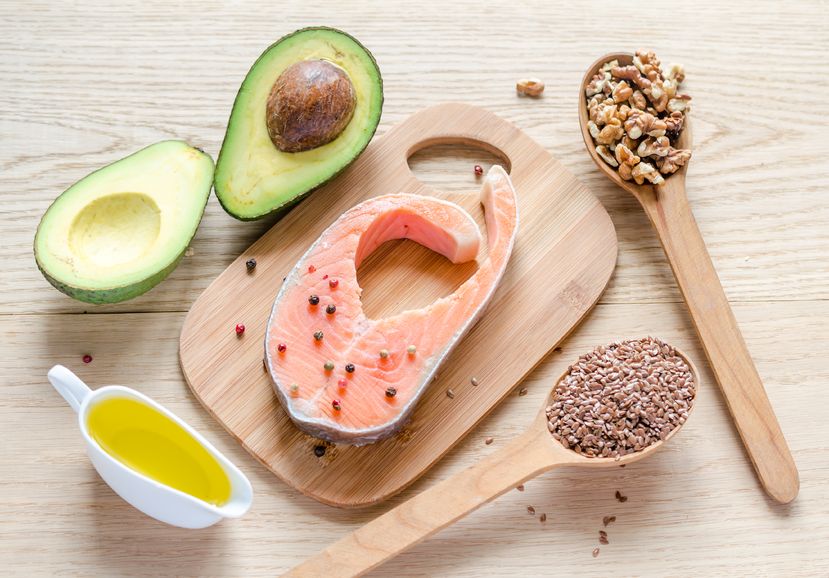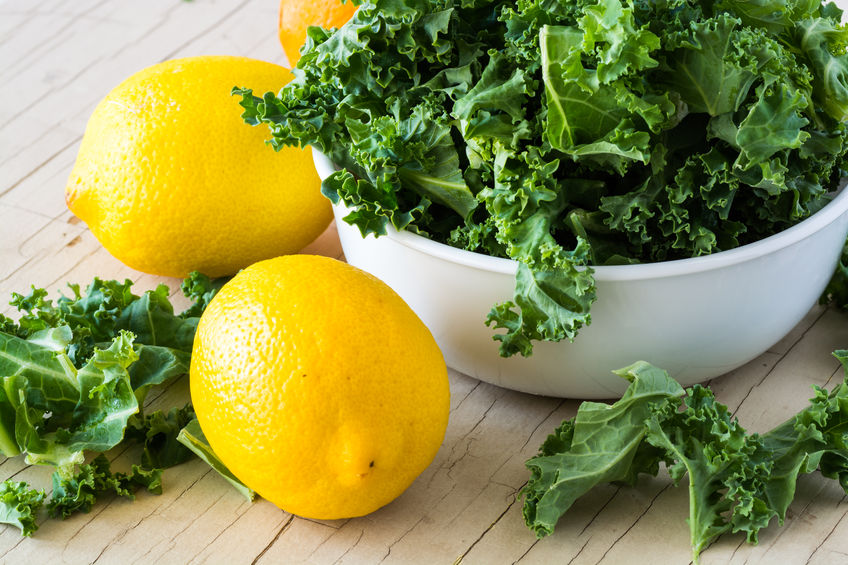Omega-3 fatty acids have consistently been shown to be protective against prostate cancer in animal studies. But when it comes to humans, results continue to be all over the place.
In the most recent review of the research published in the March 2015 issue of the Journal of Epidemiology and entitled “Effect of individual omega-3 fatty acids on the risk of prostate cancer: a systematic review and dose-response meta-analysis of prospective cohort studies” … some studies showed [1] :
-
- Omega-3s decreased risk of prostate cancer
-
- No effect of omega-3s on prostate cancer risk
- And others showed an association between omega-3 intake and increased risk for prostate cancer.
What Did The Researchers Look At?
The researchers looked at 16 prospective human studies investigating associations of dietary intake of the omega-3s, and of blood levels of the omega-3s, with risk of prostate cancer.
Here’s what they found:
-
- Higher blood levels of DHA, but not of ALA or EPA, showed a slight “borderline” increase in risk for prostate cancer. *
-
- But dietary intake of ALA (0.5 gram of ALA/day) lowered prostate cancer risk.
-
- Higher blood levels of DHA and EPA were positively associated with increased prostate cancer risk in studies with shorter follow-up duration (less than 7.4 years). But when the studies ran for longer than 7.4 years, DHA and EPA showed no association with increased prostate cancer risk.
- In some studies, a 0.2% increase in blood levels of DHA was associated with a 3% reduced risk of prostate cancer.
*(Dietary sources of DHA, EPA = cold water fatty fish. Best dietary sources of ALA = flaxseed, spinach. For a full discussion of dietary sources of the omega-3s check out, Why the Modern Western Diet Will Not Provide You with the EPA/DHA You Need)
Faced with this array of inconsistent and opposing results, the researchers concluded:
“…different individual omega-3 fatty acid exposures may exhibit different or even opposite associations with prostate cancer risk… studies with larger sample sizes and longer follow-up times are needed to confirm the results.”
Or, in plain English: “Maybe some omega-3s decrease prostate cancer risk; maybe some omega-3s increase risk. We need more studies to figure this out.”
What The Results Mean for Your Health
If you’re a man concerned about the health of your prostate, what might explain these contradictory results?
I’ve got a few ideas.
A number of animal and in vitro (from the Latin meaning “in glass,” but colloquially called “test tube”) cell studies have demonstrated that the omega-3s can inhibit cancer development and reduce risk of prostate cancer. Other studies in humans show no coherent pattern. So, with that in mind, we are going to look at what’s different about the animal studies compared to the human ones.
#1 In animal studies, the “subjects’ diet” is controlled and the amount of omega-3s they are given is controlled.
(It is typically a much greater amount than that consumed by most humans). In the human studies, neither the men’s diet nor the amount of omega-3s they consume is controlled.
The result?
The animals’ diet provides a much lower ratio of pro-inflammatory omega-6 to anti-inflammatory omega-3. The ratio seen in an average man’s diet in the US can be as high as a 20:1!
(And the US is where almost all of the studies in this review were conducted.)
Omega-3s have been consistently shown to provide protection against prostate cancer in the animal and cell culture studies. The conflicting results seen in human observational studies may mean that the diets of the men studied were not providing adequate amounts of omega-3s to balance intake of omega-6s and produce protective effects.
#2 In addition to containing far more pro-inflammatory omega-6 than would be present in a lab animal’s diet, the men’s diet is certain to have also contained potentially carcinogenic substances, such as pesticides, POPs and heavy metals, all of which oxidize (rancidify) highly vulnerable omega-3s.
Rancid oils of any type are pro-inflammatory, cause cellular damage and thus promote cancer initiation and progression. So do heavy metals, especially mercury and arsenic, which accumulate in larger fatty fish, which are the main dietary source of DHA. And there are other potential problems with relying upon dietary intake of fish for adequate omega-3 intake.
In earlier articles on the omega-3s and omega-6s, I discussed that not only do both types of essential fatty acids compete for the same enzymes, but these enzymes preferentially metabolize the omega-6s. So, when the omega-3s are greatly outnumbered by the omega-6s, the omega-3s do not get metabolized into their anti-inflammatory derivatives. (Why Omega-3 Fatty Acids Are Crucial for Healthy Bones; Omega-3s Prevent Our Bones and Muscles from Turning into Fat as We Age; Why the Modern Western Diet Will Not Provide You with the EPA/DHA You Need)

If a man is consuming farmed fish for his omega-3s, it is important to note that farmed fish contain much higher amounts of omega-6s than wild caught fish. For example, a 4-ounce serving of wild-caught salmon contains 0.64 grams of omega-6 and 3.05 grams of omega-3. A 4-ounce serving of farmed salmon contains 2.20 grams of omega-6 and 3.28 grams of omega-3.
If he is frequently eating wild-caught fish, the ratio of omega-3:omega-6 in the fish will be much better, but mercury may be present. This is why I recommend relying upon fish oil supplements that have been carefully distilled to remove mercury and other contaminants. And purchasing them from companies that can provide you with an independent lab analysis confirming their purity.
#3 Another important factor impacting a man’s risk for prostate cancer is his body mass index (BMI). Is he carrying too much fat weight?
In the studies that adjusted for the men’s weight, the association for both blood DHA and blood EPA with increased prostate cancer risk was significantly more evident in men who were overweight or obese. Excess fat, particularly visceral adipose tissue or belly fat, is highly pro-inflammatory. Tokudome S. Re: Effect of Individual Omega-3 Fatty Acids on the Risk of Prostate Cancer: A Systematic Review and Dose-Response Meta-Analysis of Prospective Cohort Studies. J Epidemiol. 2015;25(8):559-60. doi: 10.2188/jea.JE20150135. PMID: 26250793
EPA/DHA have been consistently found to be helpful in reducing risk of prostate cancer in animal studies, in which the “subjects’” diet is strictly controlled. And frankly, much healthier than the diet consumed by the vast majority of men today.
#4 Lastly, EPA/DHA have been consistently found to be helpful in reducing risk of breast cancer.
Since both breast and prostate cancers are hormone-related, this suggests EPA/DHA should be protective against prostate cancer as well. Again, the diet of the subjects in these studies is a major differentiating factor: women eat a much healthier diet than men do. Actual data analysis of what men and women typically eat shows that many men are living on pizza, chicken wings, bacon cheeseburgers and fries. Women eat salads. Okay, we also eat the occasional slice of pizza along with our salad. [2]
Factors Preventing Omega-3s From Being Helpful
In sum, my educated guess is that in the studies suggesting a possible increase in risk of prostate cancer with higher intake of omega-3s, the offenders here are not the omega-3s. But a number of factors in men’s diet and lifestyle that prevent the omega-3s from being helpful.
These include:
-
- Insufficient consumption of omega-3s to offset excessive intake of omega-6s. So the omega-3s do not get metabolized into their anti-inflammatory, anti-cancer derivatives.
-
- Consumption of farmed fish, for at least two reasons. Farmed fish contain far greater amounts of total fat than wild fish (and we’re talking saturated fat here, not the omega-6s and omega-3s). Farmed salmon is definitely a fatty fish with a total fat content of 12.3%. The total fat content of wild salmon is just 2.07%. Farmed salmon contains 5.4 times (540% more) saturated fat than wild salmon. Plus, not surprisingly, given what they are fed, farmed fish contain far more omega-6 than do wild fish (the ratio of omega-3: omega-6 is 12:1 in wild salmon versus 2:1 in farmed salmon). When more omega-6 is competing with omega-3 for the enzymes that metabolize both types of essential fatty acids, fewer omega-3s get metabolized into their anti-inflammatory, anti-cancer derivatives. [3]
-
- Contaminants in farmed and larger species of wild caught fish (and in poorly sourced or processed fish oil supplements), such as mercury, and persistent organic pollutants [POPs], that oxidize the omega-3s the fish oils contain and are themselves carcinogenic.
-
- The Standard American Diet (SAD) eaten by most men keeps them in a state of chronic low grade inflammation, and greatly increases the odds that the already inadequate amount of omega-3s consumed will be oxidized, which destroys their anti-cancer potential.
What can YOU do to experience the benefits of omega-3s?
-
- Don’t rely on farmed fish for your omega-3s
-
- Eat more wild-caught fish, specifically, the smaller, shorter-lived species, like sardines and salmon
-
- Take a fish oil supplement that will give you 2-4 grams of the natural triglyceride form of EPA/DHA per day in just a few servings. Make sure it’s palatable (has zero fishy smell or taste, no fish “burps”). Ensure purity by checking that an independent lab analysis has been run and that levels of any contaminants, if present, meet—or better, surpass—the most stringent safety recommendations:
-
- PCBs: less than 75 parts per billion
-
- Dioxins: less than 0.7 picograms per kilogram of body weight per day

- Dioxins: less than 0.7 picograms per kilogram of body weight per day
-
- Peroxide Value: less than 2.5 mEq/kg
-
- Anisidine Value: less than 20
- Totox Value: less than 25.0
-
- Take a fish oil supplement that will give you 2-4 grams of the natural triglyceride form of EPA/DHA per day in just a few servings. Make sure it’s palatable (has zero fishy smell or taste, no fish “burps”). Ensure purity by checking that an independent lab analysis has been run and that levels of any contaminants, if present, meet—or better, surpass—the most stringent safety recommendations:
-
- Cut back on the pizza, chicken wings, burgers and fries, and processed food-like items in general.
- Eat more salads, especially spinach; vegetables, especially crucifers like broccoli, kale and Brussels sprouts; and legumes, like garbanzos, lentils and black beans.
Sources:
- Fu YQ, Zheng JS, Yang B, Li D. Effect of individual omega-3 fatty acids on the risk of prostate cancer: a systematic review and dose-response meta-analysis of prospective cohort studies. J Epidemiol. 2015;25(4):261-74. doi: 10.2188/jea.JE20140120. Epub 2015 Mar 14. PMID: 25787237
- http://media.grubhub.com/files/doc_downloads/GrubHub-Inc-Men-vs-Women-Eating-Preferences-White-Paper_v001_b3cw14.pdf
- Strobel C, Jahreis G, Kuhnt K. Survey of n-3 and n-6 polyunsaturated fatty acids in fish and fish products. Lipids Health Dis. 2012 Oct 30;11:144. doi: 10.1186/1476-511X-11-144. PMID: 23110317; Weaver KL, Ivester P, Chilton JA, et al.The content of favorable and unfavorable polyunsaturated fatty acids found in commonly eaten fish. J Am Diet Assoc. 2008 Jul;108(7):1178-85. doi: 10.1016/j.jada.2008.04.023. PMID: 18589026





Article Comments